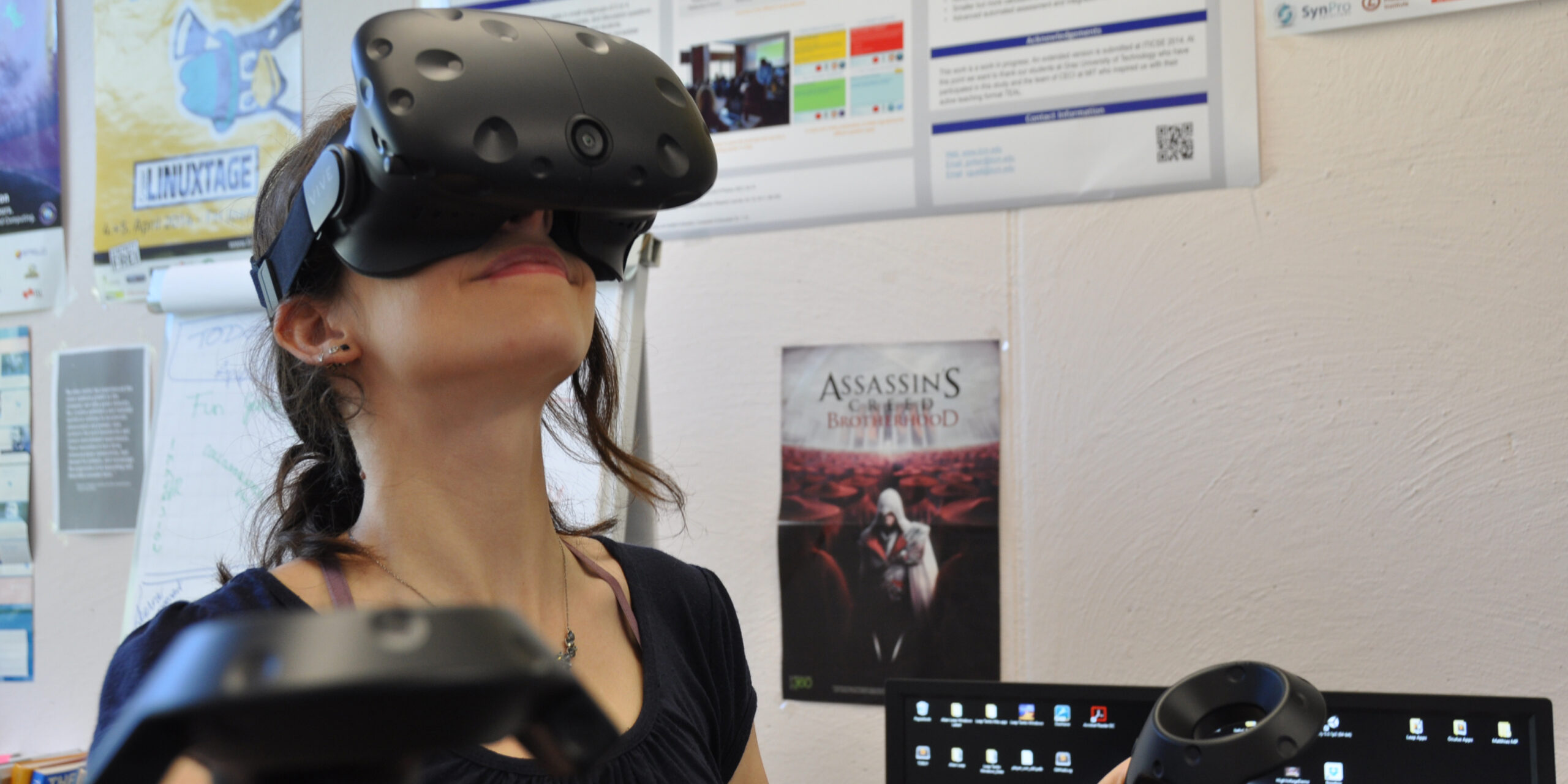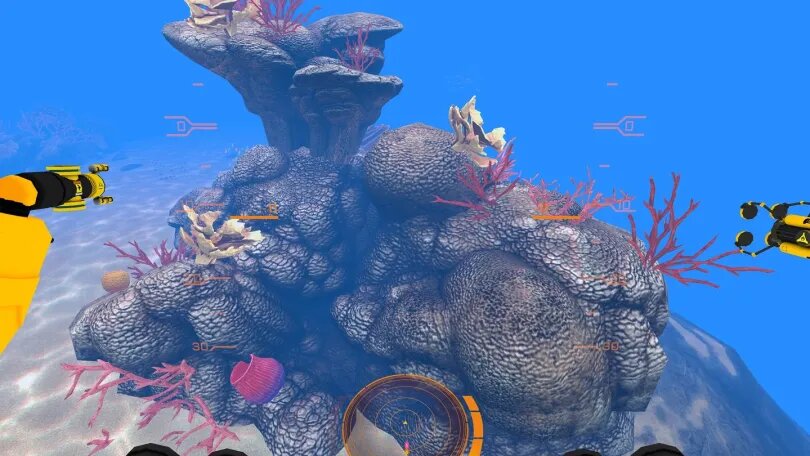The advent of virtual reality, or VR, has revolutionized the way people perform their tasks. What used to be a technology reserved for large corporations, VR is now being adopted by small and medium businesses across multiple industries.
What industries use VR? The answer is far too many to mention – from designing power plants and creating production lines to training employees. The benefits of VR in business is practically limitless.
7 ways VR is utilized in the workplace:
- Boost Sales and Marketing
- Wow Customers With VR-Based Product Demos
- Design Models and Infrastructures
- Improve Training
- Make Business Meetings and Conferences More Effective
- Improve Research
- Do Site Inspections Virtually
1. Boost Your Sales and Marketing
Sales and marketing are core components that help drive a business to success. But bombarding existing and potential customers with advertisements, phone calls, emails, product pitches, and texts hardly engage them anymore. Samsung, one of the world’s leading manufacturers of VR equipment, is banking on VR to revolutionize the way businesses conduct their sales and marketing strategies.
The average consumer of today encounters approximately 5,000 marketing messages on a daily basis as opposed to around 500 back in the 1970s. That makes him immune to almost all forms of sales and marketing efforts. How should you decide where to start your marketing efforts? How can VR be used in business? Particularly as a sales and marketing tool?
VR enables businesses to cut through the consumer’s defenses and reach out to them by providing them with “real” experiences that elicit emotions. These emotions empower them to either make purchasing decisions immediately or consider making the purchase.
2. Wow Customers With VR-Based Product Demos
Trade shows and product exhibitions teem with foot traffic and competition. According to a paper on VR’s potential applications in clinical psychology by the National Center for Biotechnology Information, VR is a highly effective stimulus capable of recreating real experiences.
VR-based product demos help businesses stand out by allowing them to provide potential clients with a multi-sensory experience that engages them on so many levels and leaves a lasting impression.
For instance, a travel agent can show clients different tourists destinations, complete with visual and auditory stimulation via a VR headset. Compare that to a competing travel company that can only show videos, pictures, and brochures. It’s easy to conclude which travel agency will get more clients.
3. Design Models and Infrastructures
As VR is now made easily available, thanks to the introduction of affordable VR headsets such as Oculus Rift and HTC Vive, architects and engineers are able to create designs for residential, commercial, and industrial buildings as well as build models for installations like HVAC and energy.
Using VR headsets, architects, engineers, and other construction professionals are able to immerse themselves in a complete 3D environment that affords them an unparalleled sense in terms of spatial awareness, depth, and scale. Something no animations, physical-scale models, or traditional renders can provide.
4. Improve Training
While nothing beats real-world education, there are some lessons that are best taught in a controlled environment. A study on retiring baby boomers and incoming digital millennials celebrates VR as an effective training platform for new workers, especially those whose professions have life-or-death consequences.
With VR, it provides trainees with a heightened sense of realism that places them in situations that feel very real yet doesn’t put them in harm’s way. Drivers, pilots, firefighters, heavy equipment operators, field engineers, oil rig workers, and doctors, among others, greatly benefit from VR-based training and simulations.
5. Make Business Meetings and Conferences More Productive and Engaging
Companies employing teams with remote workers from various parts of the globe is no longer an uncommon practice. They usually conduct meetings and conferences via Skype or WhatsApp. While that practice may be effective, imagine what they can achieve if they decide to meet in a virtual space where they seem and feel to be talking to each other rather than to someone they see on a computer screen.
For instance, when you are building a SaaS sales team, communication is crucial in defining the role of each member and setting objectives.
Utilizing a VR meeting room instead of the conventional video conference environment, participants can engage in discussions livelier than ever. Meetings are more productive. Decisions are easily reached. Everyone can provide their input and pitch in ideas as if they are in the same room.
The sense of total immersion is something that can’t be replicated in a telephone or video conference. Everyone is more engaged and this contributes to the increased effectivity of the meeting.
6. Improve Market Research
VR is certainly transforming the way market research is done. It is a growing industry according to a study on VR-based market research by Rutgers University. Companies all over the world are now spending between $30,000 to over a million dollars for VR-based store simulations.
While traditional market information such as consumer statistics, business KPIs, market trends, customer behaviors, shopping patterns, and analytics remain essential in conducting market research, the use of VR takes it a step higher and further.
The use of virtual testing in market research is not a new practice but it used to be quite expensive. Researchers required a powerful computer to mimic walking through grocery shelves while data was collected via conventional means (i.e. paper-based questionnaires and customer interviews).
Today, sales and marketing firms place their participants in a simulated environment that include interactive shelves, products, and other features found in an actual store. They can walk around, look at the items, put them in the cart, and make the purchase. VR helps researchers understand their consumers better. It helps them identify the triggers and motivations their customers’ decisions and actions.
7. Do Site Inspections Virtually
Site inspections can be costly as they involve multiple locations and a lot of site planners, decision makers, and inspectors. Instead of sending them all the way to the site, VR allows them to conduct site inspections effectively and efficiently without inspectors having to step a foot in the premises.
This is an ideal application for multiple sectors such as industrial, transportation, health and sanitation, and so on. With the right software for small business, it is possible to minimize costs while ensuring the efficacy of processes. Virtual site inspections do not only save businesses money but also keep people from life-threatening situations such as a building with compromised integrity or a meat-packing plant contaminated with an infectious agent. The last one is purely fiction but it does get the message across.
Conclusion
Virtual reality, along with augmented reality, is not coming. It has arrived and is here to stay. VR in business is becoming prevalent due to the numerous benefits it brings. What can VR be used for? The applications are many! The business applications it affords to its users will make VR the norm in the future for companies, rather than the exception.
And it is not just in business. VR has proven to be a valuable innovation in different fields, from academic and learning, law enforcement, military, non-profits, healthcare, and government services. It has undoubtedly made things easier.
The potential VR represents is truly great. More than just business, it can bring the world together and further improve the lives of everyone. Because it doesn’t make people just see or hear, VR makes people feel. When used for good, VR has the makings of a unifying force that gets people on the same page.
Credit: financesonline
Quelle:
https://blog.vr-on.com/en/7-ways-vr-is-changing-how-we-work?utm_content=121113510&utm_medium=social&utm_source=linkedin&hss_channel=lis-E2lxUkMEOG




